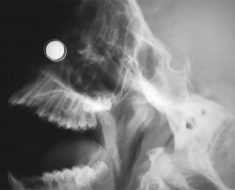NEW YORK (Reuters Health) – Following hospital discharge after transcatheter or surgical aortic valve replacement (TAVR or SAVR), atrial fibrillation or flutter (AF) may portend worse outcomes, according to a post hoc analysis of the Partner 3 trial.
“Such late AF episodes occurring beyond the index hospitalization are associated with worse prognosis and higher rates of predominantly cardiovascular hospitalizations, in contrast to early AF events,” Dr. Ioanna Kosmidou of Columbia University Irving Medical Center, New York City told Reuters Health by email.
In the Partner 3 trial, patients with severe aortic stenosis at low surgical risk were randomized to TAVR or SAVR. After excluding participants with pre-existing AF, the researchers analyzed data on 781 patients, including 415 who underwent TAVR and 366 assigned to SAVR. Postoperative AF (POAF) was categorized as early if it occurred during the index hospitalization and late if it occurred up to a year after hospital discharge.
Early POAF was seen in 19.5% of patients and was significantly less prevalent after TAVR (4.3%) than SAVR (36.6%), the researchers reported in JACC: Cardiovascular Interventions. This finding, they say, reaffirms that early POAF remains common following SAVR despite the lower risk population enrolled in PARTNER 3. However, after adjustment, early POAF was not an independent predictor of the composite outcome of death, stroke, or rehospitalization.
Early POAF had resolved in 83.2% of patients by hospital discharge. At one year, however, 55 patients (7.0%) had new or recurrent late POAF events. This was seen in 3.8% of TAVR patients and 10.4% of SAVR patients, but regardless of treatment modality, late POAF was associated with a significantly increased adjusted risk for the composite outcome (hazard ratio, 8.90).
Summing up, Dr. Kosmidou noted, “This is the first study that fully captured and adjudicated all atrial fibrillation and flutter events both within the index hospitalization following SAVR or TAVR but also longitudinally up to one year.”
“We showed for the first time that patients remain at risk for developing such arrhythmic events several months after intervention,” she added.
Overall, she concluded, “the present study indicates the ongoing need for vigilant cardiac rhythm monitoring following SAVR or TAVR, mainly of patients with in-hospital AF or patients with enlarged left atria, as LA enlargement was a key predictor of early or late AF.”
In an accompanying editorial, Dr. Marvin H. Eng of Banner University Medical Center, Phoenix, Arizona, and colleagues question certain aspects of the study but conclude that the paper “serves as a call to action for improving the innovation and quality of atrial fibrillation prophylaxis for procedures, particularly cardiac surgery.”
SOURCE: https://bit.ly/3eOZzG5 and https://bit.ly/3rwugVE JACC: Cardiovascular Interventions, online July 19, 2021.
Source: Read Full Article





